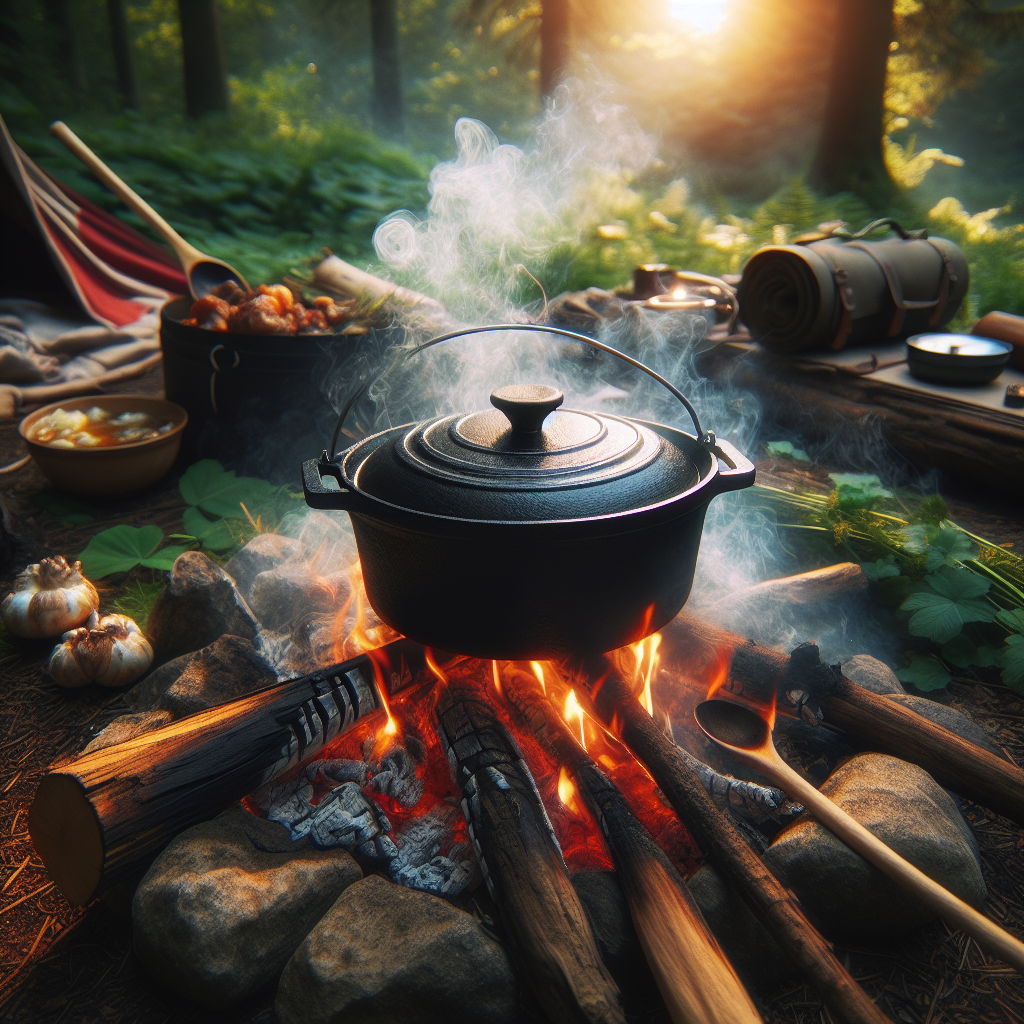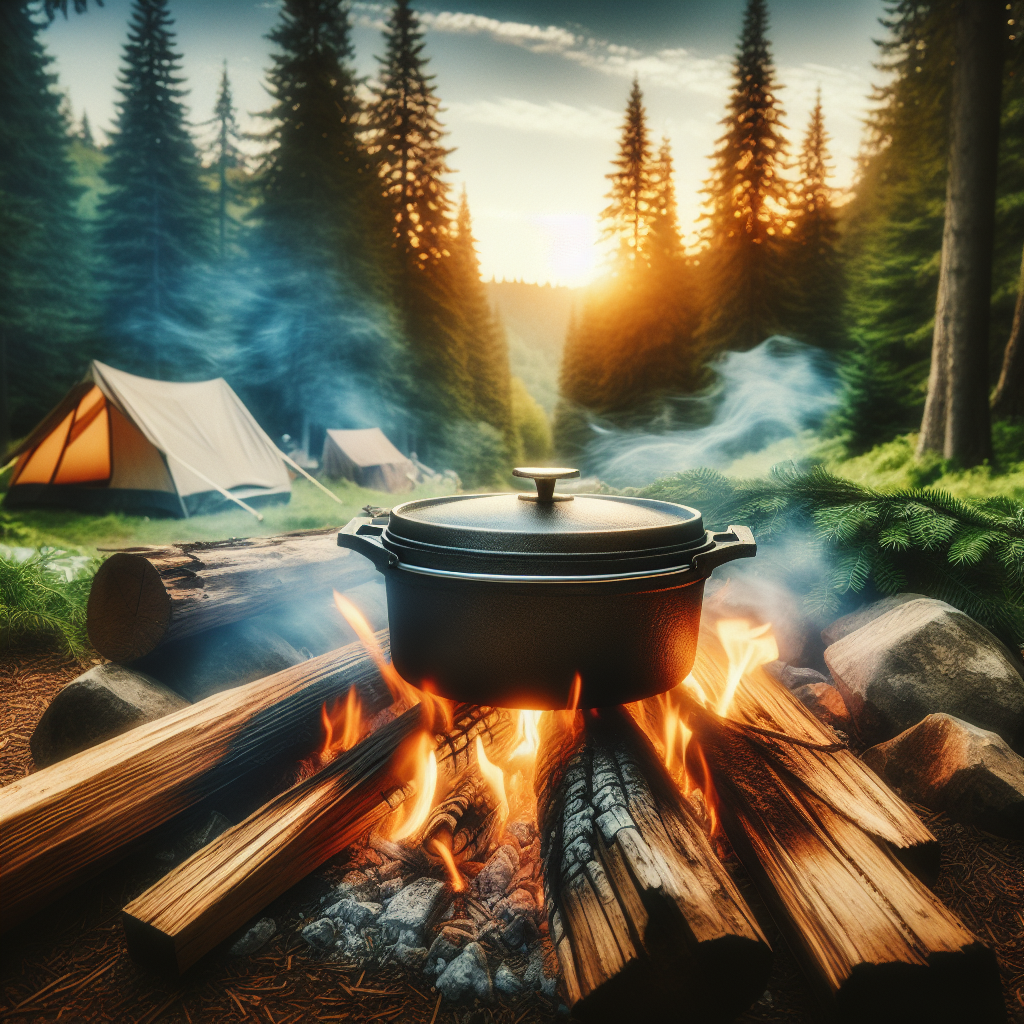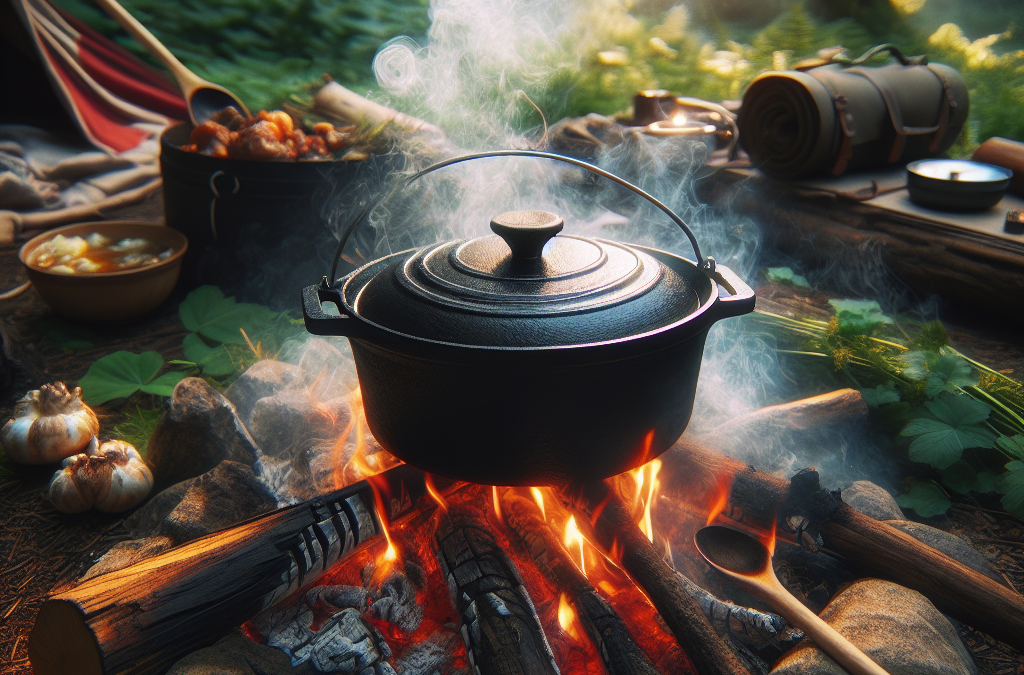Imagine settling down at a campsite after a long day of hiking, the sun setting, the fire crackling, and your Dutch oven sizzling with a hearty meal. Here at TrailTrekTribe, we’re all too familiar with this blissful moment and in “The Art of Campsite Cooking with a Dutch Oven”, we share with you just how you can recreate this magic. Noah Parker, our seasoned adventurer and founder, along with our community of wanderlusters, share insights and personal stories on turning simple campsite meals into gourmet feasts using nothing more than a Dutch Oven. From in-depth gear reviews to key techniques and mouth-watering recipes, we provide comprehensive, practical guidance based on our very own experiences. Join us as we explore the rich, aromatic, and truly transformative world of campsite Dutch Oven cooking.
Understanding the Basics of a Dutch Oven
What is a Dutch Oven
You’ve likely heard about it, but what exactly is a Dutch oven? Imagine a thick-walled pot, typically cast iron, equipped with a tight-fitting lid designed to circulate heat, whether from an indoors stovetop or an outdoors fire. Dutch ovens are renowned for their versatility, able to handle anything from roasting to baking, frying to stewing.
Varieties of Dutch Ovens
Like most camping gear, Dutch ovens come in various types. The most common are the traditional and the camp Dutch oven. While traditional ones are perfect for your indoor kitchen with a flat bottom perfect for your stove, camp Dutch ovens are especially designed for outdoor use. They feature three legs for balance over charcoal and a flanged lid to hold additional coals.
Choosing the Right Dutch Oven for Camping
Your camping needs will significantly impact your choice of Dutch oven. Size and weight are primary factors; the more people to feed, the larger the Dutch oven you’ll need. However, remember that larger ovens are also heavier, which could be a consideration if you’re planning a backpacking adventure.
Essential Tools for Dutch Oven Cooking
Lid Lifter
A lid lifter is a must-have tool when cooking with a Dutch oven, saving your fingers from the scorching heat when you need to check on your food.
Charcoal Chimney
This handy device allows you to easily and quickly light your charcoal briquettes. It’s essential for maintaining a consistent temperature in your Dutch oven.
Dutch Oven Trivet
A Dutch oven trivet raises your pot above the coals, increasing airflow and enhancing temperature regulation.
Protective Gloves
Safety first – a pair of heat-resistant gloves are a must to protect your hands when cooking with a Dutch oven.
Thermometers
A thermometer will take the guesswork out of cooking and ensure your meals are safe and perfectly cooked.

Preparing Your Dutch Oven for Cooking
Initial Cleaning
Your Dutch oven should come pre-seasoned and ready for its first cooking adventure. However, giving it a quick warm soapy water wash won’t hurt.
Seasoning Your Dutch Oven
Seasoning a Dutch oven means creating a protective coating that prevents rust and creates a non-stick surface. This involves applying a thin layer of oil and heating the oven.
Maintenance Tips for Longevity
Regular cleaning and reseasoning after use are essential to ensure the longevity of your Dutch oven. Never use abrasive cleaning tools, and always dry your oven thoroughly to prevent rust.
Regulating Temperature with Charcoal Briquettes
The Rule of Three
The rule of three is a general guideline to help manage heat when using a Dutch oven. Subtract three coals from the oven’s diameter for the bottom, and add three for the top.
Arranging Charcoal Briquettes
Arrangement is crucial as it helps distribute heat evenly, which is vital for perfect cooking. The majority should always be on top, with a few arranged in a checkered pattern beneath.
Adjusting Heat Levels
Controlling heat levels involves adding or removing briquettes. Always plan for a longer cooking time – it’s easier to add heat than to cool your oven down.

Campsite Safety Tips When Cooking with a Dutch Oven
Preventing Burns
Always use protective gloves when handling your Dutch oven. Keeping a safe distance when opening the lid to avoid steam burns is also important.
Proper Ventilation
Ensure you are always cooking in a well-ventilated area. When cooking indoors, keep your windows open or your extractor fan running.
Maintaining a Safe Cooking Area
Keep your cooking area free of flammable materials and always have your Dutch oven on a stable surface.
Cooking Techniques for Dutch Oven
Roasting
Your Dutch oven is an excellent roaster – just place your meat and vegetables inside, cover the lid, and let the heat circulate.
Baking
Yes, you can bake with a Dutch oven! Whether it’s bread or a cake, the result is amazing.
Frying
The Dutch oven’s sturdy construction and heat retention make it perfect for frying.
Stewing
Slow cook stews to perfection. The Dutch oven controls moisture and evenly cooks your dish to a tender finish.
Simmering
Great for simmering sauces or cooking grains, your Dutch oven keeps the temperature steady.
Favorite Dutch Oven Camping Recipes
Breakfast Recipes
Starting your day with a hearty breakfast cooked in your Dutch oven can be a true camping highlight. Try a simple yet delicious mountain man breakfast with eggs, potatoes, and cheese.
Lunch Recipes
A warm soup or a spicy chilli prepared in your Dutch oven is great for a quick campsite lunch.
Dinner Recipes
Dinner possibilities are endless – from a wholesome casserole to a succulent roast chicken, your Dutch oven does it all.
Dessert Recipes
End your day on a sweet note, with a Dutch oven peach cobbler – a true campfire classic.
Challenges and Solutions in Dutch Oven Cooking
Managing Burnt Food
Sadly, burnt food happens. However, it’s not a lost cause – scrape off the burnt layer and salvage what you can.
Overcooking and Undercooking
The key to avoiding these challenges is frequent food checking and appropriate heat regulation.
Dealing with Weather Conditions
Cover your Dutch oven with foil to protect it from wind or use a windbreak. In wet conditions, ensure your coals stay dry.
Cleaning and Storing Your Dutch Oven
Proper Cleaning Methods
Warm soapy water and a non-abrasive sponge will do the trick. Rinse well and dry thoroughly.
Seasoning After Cooking
Just as you seasoned your oven initially, it’s crucial to do so after each cooking session.
Safe and Dry Storage
Store your Dutch oven in a dry, well-ventilated place with the lid slightly open to avoid moisture build-up.
Embracing the Community Aspect of Dutch Oven Cooking
Sharing Recipes and Techniques
One of the joys of Dutch oven cooking is sharing your favorite recipes and cooking techniques with other outdoor enthusiasts.
Cooking for Large Groups
The size of a Dutch oven is typically large enough to cook for a crowd, making it a great choice for family camping trips or gatherings with friends.
Teaching Kids the Art of Dutch Oven Cooking
This is an excellent opportunity for little ones to learn cooking basics and develop a love for outdoor cooking.
All in all, Dutch oven cooking is more than just a way to prepare food – it’s an integral part of the camping experience that promotes togetherness, fun, and learning. So grab your Dutch oven, gather your tribe, and let’s get cooking!

